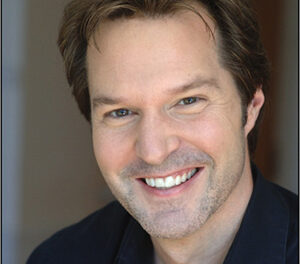“Music’s Golden Age: Bach, Handel & Mozart,” Carolina Baroque, Dale Higbee, Music Director; Live recording of a concert in St. John’s Lutheran Church, Salisbury, NC, on February 10, 2006; CD 123, © 2006; TT 74:53, $15.00, including shipping, available from Carolina Baroque, 412 South Ellis Street, Salisbury, NC 28144-4820; http://www.carolinabaroque.org/.
This is Carolina Baroque’s 23rd CD, a statistic that is in itself a testament to the staying power of the group, founded in 1988. Music Director Dale Higbee recently turned 81, another remarkable staying power statistic. This is generally speaking quite a fine production. In spite of the fact that it is a live concert recording, there are no disturbing extraneous audience noises or inappropriate outbursts of applause. How did they achieve that? The sound quality is striking for these circumstances.
The title and program are a bit curious since Mozart (1756-91) was not a contemporary of Bach and Handel, both born in 1685 and dying respectively in 1750 and 1759. Indeed, Mozart belongs to the “Classical” rather than to the “Baroque” period, and the group’s focus (stated on the tray card, which also lists all of the CDs available) is “Music of 1600-1750,” thus ending before Mozart’s birth. This aberration can perhaps be overlooked in this Mozart anniversary year, however, especially since he is represented here only by two organ works, the Adagio and Allegro in F, K.594, and the Gigue in G, K.574, very nicely played by Susan Bates, that serve as an interlude amidst the vocal works. Of course, it could also be argued that Bach wrote plenty for that instrument and Handel did not ignore it either.
The featured works are Bach’s Cantatas “Weinen, Klagen, Sorgen, Zagen,” S.12, and “Die Elenden sollen essen,” S.75, which open and close the program. Two selections from Part III of Handel’s Theodora – a soprano Aria from Scene 1 and a chorus from Scene 7 – round out the performance, following the two organ works in the middle.
Carolina Baroque consists of four singers, one per part, and six instrumentalists. They sound authentic and appropriate for the period of the music with the exception of some of the singers occasionally having a slight case of the wobbles that do not suit the generally accepted pure tone of the Baroque vocal style. There is an occasional lag in the tempi; this is slightly distracting but does not mar the performance. The choral work and some of the vocal solos are indeed often quite impressive for such small forces.
The CD does not have a booklet per se but merely a folded “cover” sheet in the jewel case, featuring a photo and list of the performers on the front and track listings (in English translation and without timings, alas) on the back, and completely blank inside. The review copy was accompanied by a copy of the concert’s printed program, which features notes by Higbee and texts/translations (although disappointingly not the original sung German of the Bach works) as well as brief bios of the composers and performers. We trust that other purchasers of the product will receive one also, so that it is not merely a souvenir for those who attended the concert and kept theirs? This group admirably fills an important niche in North Carolina’s classical music scene and is one of the state’s principal exponents of the music of this period. It is laudable that it is archiving its work in this manner, but it would be better yet if the packaging matched the professionalism of the sound and the performance. We are happy to recommend that others who have not heard Carolina Baroque take a chance on this CD; we think they will not be disappointed.













